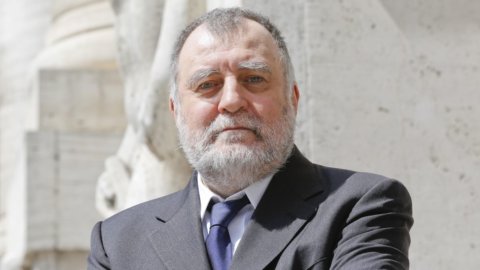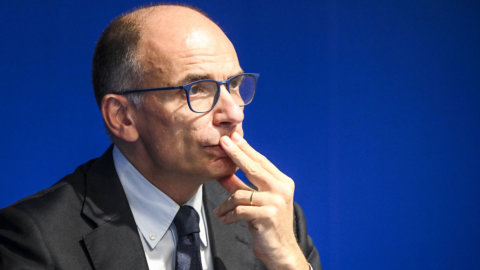It is popular to say that central banks have run out of ammunition, they are desperate, they no longer know what to do. It is said that they have cornered themselves and that with rates at these levels they no longer have room for manoeuvre.
Those who make these statements are right if their intention is to highlight the side effects of zero or negative nominal rates and real rates that have been negative for years throughout the developed world. The decision to keep interest rates so low has at least six unfortunate consequences.
The first is that it produces a suboptimal allocation of capital. The second is that it favors the formation of bubbles that will burst one day, perhaps far away. The third is that, paradoxically, it leads businesses and households, aware that rates will remain low in the long run, to take it easy in their productive investments. We recall that one of the factors in the cyclical recovery is typically the rush to take out a mortgage to buy a house (or to open a new production plant) before interest rates rise again. If one gets the impression that in five or ten years interest rates will be as low as today, the hurry disappears.
The fourth is that the slowdown in investment wipes out productivity growth, perpetuating semi-stagnation. Fifth, major parts of the pension system like US pension funds will one day have to announce that the pensions they will pay will be half of what they pledged to deliver. The sixth is that, to make up for the negative real rates and the uncertainty about pension coverage, we consume less and save more, further slowing down growth.
Having said that, central banks, if they will, still have room to maneuver and they will indeed have plenty of it between now and the end of the year. They will even have the luxury of being spoiled for choice.
Let's start with the Fed. It may do absolutely nothing throughout 2016, because inflation is still low. He will be able to raise rates on 20 September and announce that for a few months he will stand by to see the effects of his decision. The market, having overcome the initial surprise, will consider the increase as a confirmation of the strength of the economy, will look to the next six months without the fear of further increases and will rush forward to 8 November, the day of the presidential elections.
Alternatively, the Fed will tell us on September 20 that everything is ready for a hike in December. The market will breathe a sigh of relief and will have plenty of time to prepare for the year-end hike, however arriving perfectly toned at the November 8th elections.
The only way that can disturb the markets is the one left open by Stanley Fischer, the double September-December rise. However, it is legitimate to think that Fischer, the most hawkish of the troika that leads the Fed, has deliberately alluded to two hikes knowing full well that there will be only one, but thus creating the conditions for a sigh of relief in December.
Why, one may ask, was last December's rise a half-disaster and this year's rise should instead be welcomed by stock markets at historic highs and pacified and calm bonds? The reason is that in 2015, the Fed was afraid to raise when things were going well and, going back and forth, felt at one point on the verge of total loss of credibility and ended up raising rates, with a decision almost hysterical, just as the economy was starting to slow down and as China was entering a quarter of recession.
The Fed has since learned that it's better to raise when you can than when you have to. And when can rates be raised? When the economy is good, the dollar is calm and the markets are calm.
Now it is true that the American economy has been weak for a good ten months, but it is also true that for two months things have been looking better. This third quarter could see annualized growth close to 3 percent. The dollar is not too strong and has indeed weakened against the emerging countries. Stocks and bonds, for their part, have been left to rise quietly in these months of European and Japanese Qe while the Fed, with the elections approaching, has avoided admonishing a stock market that has risen while profits have fallen. It is not certain whether the current strength of the American economy is a sign of something lasting or if it is instead, as David Rosenberg puts it, a simple spasm. But this is all the more reason for the Fed to seize the moment and raise without the markets feeling bad about it.
The ECB and the Bank of Japan also enjoy a window of freedom of action between now and the end of the year. Inflation is low, sure, but Quantitative Easing autopilot works around the clock. The two banks, which will shortly take stock of the situation, will not be forced to announce new astonishing expansionary measures because the euro and the yen, with a dollar smelling of rate hikes, will remain calm and will not strengthen. If they decide to expand Qe anyway, they will make sure not to weaken the euro and the yen, which are now in equilibrium.
In summary, whatever decision central banks make, the markets will remain in their placid and contented lethargy for another two months. Perhaps there will be some modest downward exploration in September (September effect, seasonally negative month, and FOMC effect) but October will be quiet again. After the elections, in the no man's land that runs from November to February, the Fed, if it wants, will be freer to admonish the stock exchanges against excesses and to have them corrected.
September can therefore be used to buy on weak bonds and shares. In October it will be better to gradually lighten all positions, not because particular disasters are in sight, but out of normal prudence. Another useful way to spend the next couple of months will be to keep moving funds from utilities to cyclicals and banks. Dollar to sell at 1.10 and to buy at 1.15. Emerging overbought but strategically still positive.




